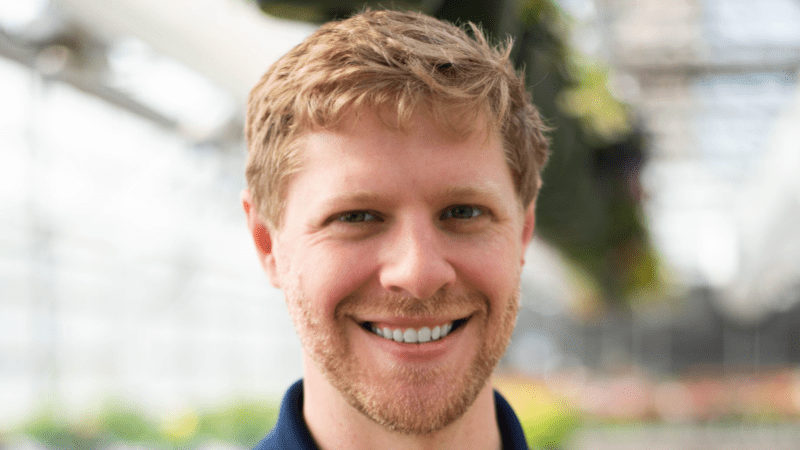
Forty Under 40 Perspectives: Under pressure?
When you think of North Dakota, you probably don’t think of horticultural diversity and lush gardens. So how did I get started in horticulture? My family loves plants. From my grandmother’s perennials to my dad’s vegetable garden, I had plenty of opportunity to experience what a Zone 3-4 could offer … or maybe not offer. Fast forward to middle school — my dad and I built a small lean-to greenhouse out of old windows and started Nathan’s Greenhouse. My passion for plants then exploded.
I produced and sold vegetables and bedding plants for almost 10 years before starting my bachelor’s at North Dakota State University. Throughout undergrad, I garnered a wide variety of experiences with internships at Como Park Zoo and Conservatory and Ball Horticultural Co., conducted tissue culture research and grape breeding, and even published a paper on micropropagation of wisteria.
I developed an expertise in postharvest handling of floriculture inputs and cut flowers through a masters degree and doctorate at North Carolina State University under John Dole, Ph.D. In my current position at Ball, I coordinate the technical services team and develop solutions for the industry through culture research.
My relatively short professional career has been a blur so far! I’ve experienced plant pathogens disrupt the supply of some of the largest volume crops, not to mention the impact of COVID on “normal” life and business. I relate to many young professionals who came into the industry since 2020. There is a lot of pressure. Pressure to succeed, pressure to improve and pressure to fill the shoes of those who helped take this industry from mineral soils to high-density peat-based plugs and develop a global vegetative supply chain.
Have you ever heard the question: “Oh, you are the next so and so?” Whether you’re trying to carry on a legacy, become more profitable or breed the next resistant variety, the future may look quite challenging. Handling this pressure isn’t easy, but it’s worth it. I’ve had to learn quickly in my role and develop a system even faster. A big part of that system is collaborating with other divisions in Ball — academics and industry partners. Collaborating with a wide range of colleagues is something that I do every day and it’s helped me develop in my career immensely.
Many of you likely rely on the research or consultation of others to make informed decisions about challenges in the future. Well, if you look around there are fewer and fewer people out there that are supporting the industry. I have helped build a network of experts while here at Ball. These people from around the globe bring various expertise, resources and knowledge. They’re the support system that I can call on for assistance.
I don’t know everything and I don’t have the personal experience of growing up with the industry, so I’ve tried to learn as much as I can from those who have. I once called this history, but was quickly corrected by my mentor and predecessor, Will Healy, that it’s called “context.” Context can save a lot of time and effort, prevent mistakes and hasten progress. Before you lose the context of long-time employees or colleagues, make sure you invest in learning what they know because you don’t know what you don’t know. Relieve some of the pressure by building relationships and collaborating with those who may have a different perspective.
Collaborative research is the name of the game now, too. If you look at academia, most large grants are multidisciplinary and multi-institutional. If you think you can go it alone in the industry (personally or as a business), I’d rethink that strategy. Labor shortages, inflation and a more unpredictable supply chain are making business difficult.
Research has often been the conduit to making processes more efficient. In my research, I’m developing science-based solutions to tackle current and future issues. For example, the pressure of input costs is huge — investing in something like automation or LEDs can be hard to swallow. The electrical savings of LEDs can’t be the only argument to invest. My research has helped quantify additional ROI opportunities. Think about how a new production strategy or product may influence labor savings, crop time and product uniformity. Then factor that into the decision-making process. Reach out to others, researchers and peers, to help make an informed decision for the future.
Pressure is all around us, but don’t get discouraged and don’t wait for things to get easier, either. I’ve been told and learned that things don’t get easier — you learn how to handle the hard stuff better. My plan is to continue to learn, to collaborate, and most of all, enjoy the work that I do. I look back on how I got here and why I love plants. Horticulture is the intersection of people and nature. While it sure can get messy along the way, the result is beautiful.
For an enhanced reading experience, view this article in our digital edition by clicking here.


 Video Library
Video Library 




















